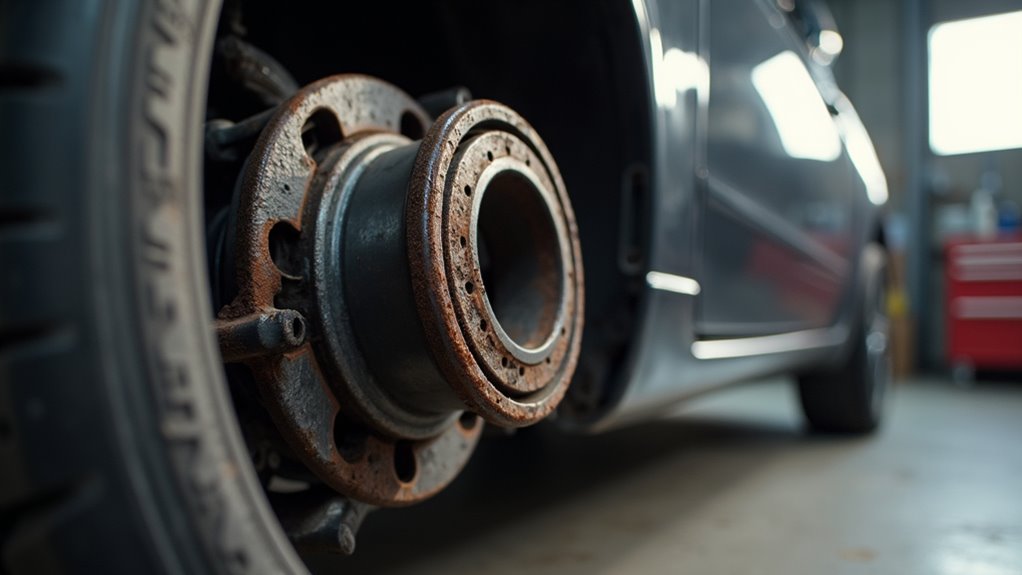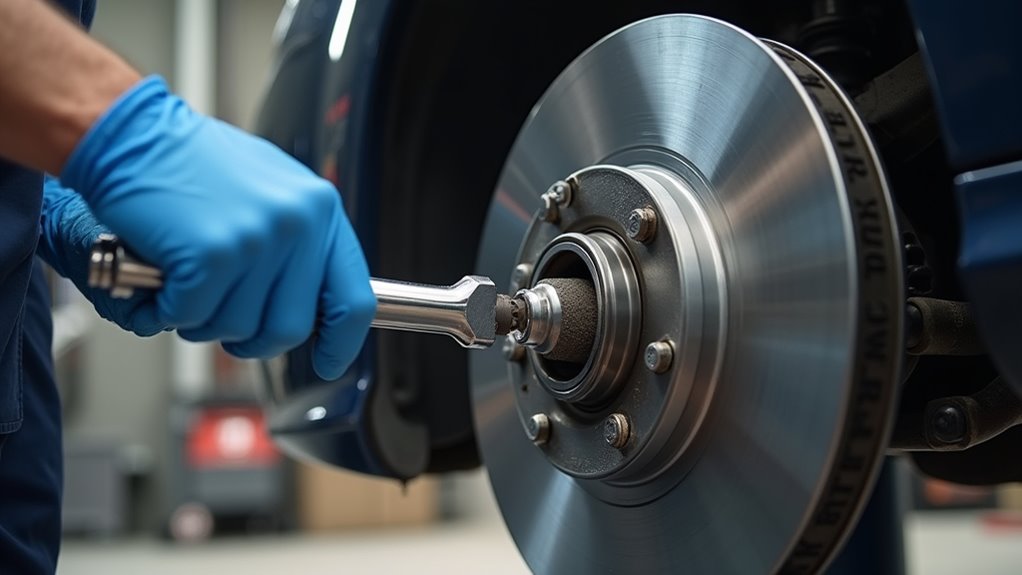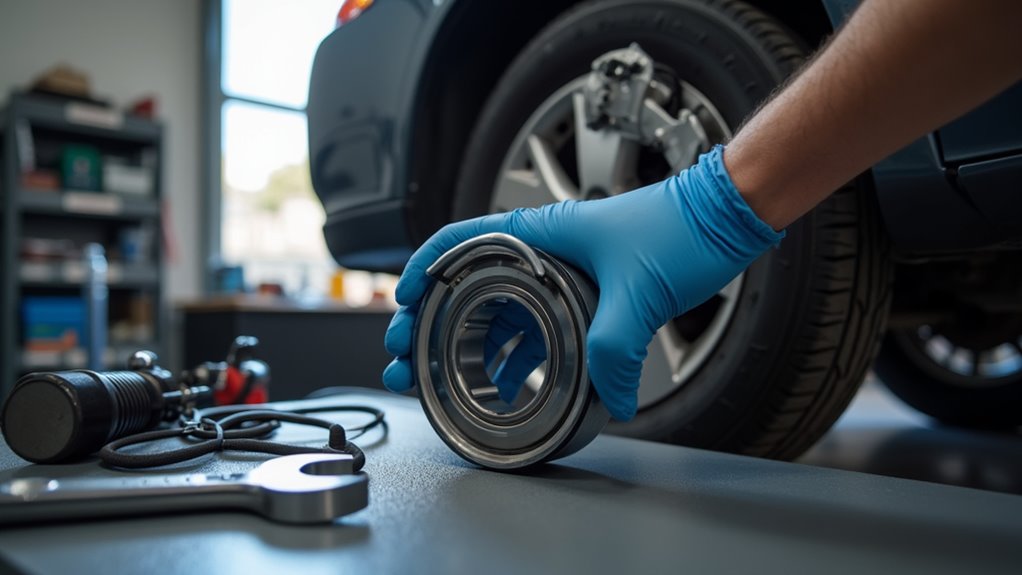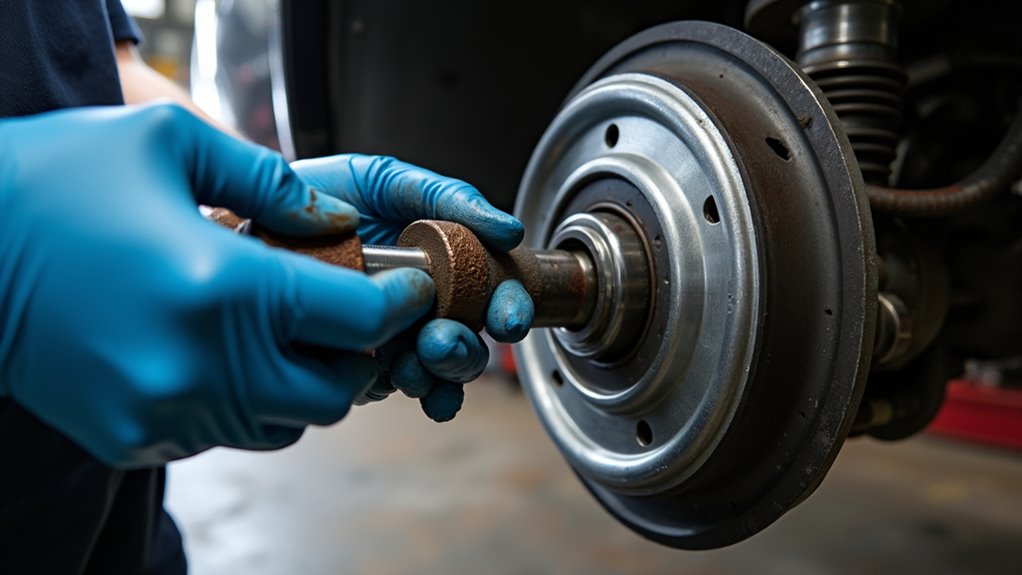Are Wheel Bearings Easy To Replace
This post contains affiliate links. As an Amazon Associate, we earn from qualifying purchases.
Replacing wheel bearings can be challenging and is not always easy, depending on your skills, tools, and vehicle type. For a deeper understanding, including the specific equipment needed and potential complications, further details and guidance will be provided later in the article.
Essential Facts in 30 Seconds
- Wheel bearing replacement difficulty depends on vehicle type and bearing location.
- Basic mechanical skills and proper tools are required for replacement.
- DIY replacement may take 2-4 hours per wheel for beginners.
- Professional replacement costs $100-$300 per wheel and is less time-consuming.
- DIY mistakes can cause safety risks or vehicle damage.
Understanding Wheel Bearing Basics
Wheel bearings are super important for your vehicle’s smooth and safe ride. They help wheels spin without any trouble.
Let’s break down the types easily. Ball bearings work great for high speeds but carry light loads. Tapered roller bearings handle both side and straight forces well. They’re often used in cars with bigger contact areas. Roller bearings, like cylindrical ones, support heavier stuff. Proper maintenance ensures wheel bearing longevity and prevents potential safety issues.
Maintenance keeps bearings in top shape. Lubrication with grease stops metal parts from rubbing. This cuts down friction and damage. Sealed bearings need no extra care. But heavy-duty vehicle owners must check them often. Dirt or water can cause big problems. Rolling elements inside bearings carry vehicle load and ensure minimal friction during rotation. Ignoring maintenance can lead to unusual bearing noises that signal potential failure. Regular inspection can help identify failing bearing symptoms before they become serious issues.
Here’s a quick look at types:
- Ball Bearings: Best for speed, not heavy loads.
- Tapered Roller Bearings: Great for mixed forces.
Focus on upkeep to ensure safety. A little care goes a long way. Your drive stays smooth and worry-free!
Signs You Need a Replacement

Spotting trouble with wheel bearings is vital for your safety. Listen for odd sounds like grinding or humming while driving. These noises often mean the bearings are wearing out. Grease leaks or bad seals might be the cause. You could also feel shaky steering or weird vibrations. This shows the bearings might mess up wheel alignment. Bad control of your car is a big risk. Additionally, noticing excessive play when manually checking the wheel can confirm bearing issues with visible movement. Timely replacement of bearings can prevent safety risks and ensure smooth driving. Regular inspections can help catch excessive wheel play before it becomes a serious issue. Ignoring these symptoms can lead to more severe problems, such as decreased handling capabilities, which could compromise your safety on the road.
Look at this simple table to spot issues fast:
| Symptom | Description |
|---|---|
| Grinding Noise | Grease is gone, causing rough friction |
| Uneven Tire Wear | Bad bearings make tires wear unevenly |
| Steering Pull | Bearings cause the car to drift |
| ABS Warning Light | Sensor trouble tied to bearing problems |
| Wheel Wobble | Loose bearings could lead to danger |
Act quick if you notice these signs. Waiting can harm your car’s safety badly. Fix those bearings to stay safe on the road.
Tools and Skills Required

Let’s dive into fixing those failing wheel bearings with the right stuff. You’ll need proper tools to get the job done safely.
Grab safety gear like gloves and safety glasses first. Hand tools such as pliers and screwdrivers are a must. A ⅜ socket set, ranging from 10mm to 19mm, works great. Don’t forget a torque wrench for precision. A ½ inch ratchet with a 19mm or 21mm socket helps too. Some cars might need a 35mm socket or a breaker bar. Check your vehicle’s manual to be sure. Remember, specialty tools are often required for wheel bearing replacement to ensure proper installation specialty tools required. Regular inspections during maintenance can help catch early signs of wear wheel bearing maintenance. Seeking professional help can ensure accurate diagnosis if you’re unsure about the process professional auto repair.
Skills matter just as much as tools do. Know your vehicle parts well before starting. Physical strength is key for lifting heavy components. Patience helps with stuck or rusty bolts. Sharp problem-solving can save the day with surprises. Timely replacement of bearings can prevent more severe vehicle issues timely bearing replacement.
Always follow safety steps to stay out of harm. Get ready with these tools and skills. Tackle the job with confidence and stay safe!
Step-by-Step Replacement Process

Let’s dive into replacing a wheel bearing with an easy five-step plan. This ensures safety and gets the job done right. Stick with me for clear guidance!
Start by parking on a flat spot for stability. Set the parking brake tight. Use wheel chocks to keep things safe. Grab tools like a jack and socket set now. Next, raise the car using that jack. Secure it with jack stands for protection. Take off the wheel and brake parts if needed. Always inspect the hub assembly for signs of damage before proceeding with the replacement.
Then, pull out the old wheel bearing. Use a pry bar or bearing press for this. Clean the hub area well after removal. Applying a suitable lubricant can help loosen a stuck bearing during this process. Check this quick table for key steps:
| Step | Action | Tool Needed |
|---|---|---|
| Preparation | Secure car, grab tools | Wheel chocks, jack |
| Lifting | Raise car, remove wheel | Jack stands, lug wrench |
| Bearing Removal | Pull old bearing, clean hub | Pry bar, bearing press |
Now, put in the new wheel bearing. Add grease and tap it with a mallet. Finally, put everything back together. Tighten all parts with proper torque. Test the wheel for smooth spinning. You’ve got this! Remember, regular maintenance of wheel bearings is crucial for vehicle safety and performance.
Cost Factors to Consider

Think, think about the cost of replacing wheel bearings carefully. A DIY fix can save you money. You might spend only $50 to $350 on parts.
Got tools and skills? Great! You cut costs big time. But, professional help ensures safety and accuracy. Expect to pay $100 to $300 per wheel for labor.
Costs vary by vehicle type and local rates. Assess your time and know-how first. Mistakes in DIY can cost more later. Those errors might erase all your savings.
Choose wisely to avoid extra repairs. Regular maintenance can also extend bearing lifespan and prevent costly failures. Keep in mind that the time taken for replacement can vary from 1 to 3 hours depending on the mechanic’s experience and vehicle complexity. Additionally, consulting online reviews can help you find reliable repair services to ensure quality work.
DIY Cost Savings
Saving money by replacing wheel bearings yourself is totally possible. Let’s break it down. You skip labor costs, which can save you hundreds. Parts cost between $50 and $250 per bearing. The price depends on the quality you pick. Remember, having the right tools can make the job much smoother and more efficient. Investing in a bearing puller can simplify the bearing removal process and save you time. Regular maintenance can prevent wheel bearing failure and ensure safer driving.
Check this simple table for costs and benefits:
| Cost Factor | Impact on Savings |
|---|---|
| Part Quality | Costs more, lasts much longer |
| Bearing Type | Price varies, changes difficulty |
| Vehicle Complexity | Takes more time, cuts savings |
| Tool Investment | Upfront cost, reuse later |
Think about quality first. Better parts mean fewer repairs down the road. Complex vehicles need extra tools or time. Budget smartly for parts and gear. You’ve got this!
Professional Labor Expenses
Labor costs for wheel bearing replacement matter a lot. They can range from $50 to $140 per hour. This depends on your location and shop type.
City shops often cost more than rural ones. Dealerships charge higher rates than small garages. Why? Bigger overhead and fancy tools.
Experience of the mechanic counts too. Skilled ones might cost extra. But they finish fast, saving you money.
Think about these points:
- Vehicle Size: Big cars mean tougher jobs.
- Job Type: Rear bearings take more time.
- Hours Needed: It can take 1-3 hours.
Driving on damaged bearings is highly risky. Ignoring this can lead to complete bearing failure and jeopardize your safety.
Regular inspections can help identify issues early. A simple check for excessive wheel play can prevent major problems.
Check these details before you decide. Make a smart choice today! Timely replacement of bearings can prevent serious safety risks and costly damages down the line.
Safety Tips and Best Practices

Safety comes first while replacing wheel bearings. Always prepare well to stay safe. Protect yourself with gloves and goggles. Keep your workspace clean and bright. A messy area can cause accidents. Handle all parts with care to avoid injuries.
Picture these key safety tips clearly:
- Lock the car on a jack stand. See it steady and safe.
- Put on goggles to guard your eyes from dirt.
- Arrange tools neatly. Keep every wrench close by.
- Check parts for damage. Spot cracks before they harm.
Stick to the maker’s guide every time. Use the right tools for the job. Tighten all bolts twice to be sure. This keeps you safe and the job done right. Ensure the vehicle is on a level surface before starting any work. Remember that bad wheel bearings can trigger issues like ABS light activation if not addressed properly. Regular checks can help prevent severe problems before they escalate.
Frequently Asked Questions
How Long Do Wheel Bearings Typically Last?
Wheel bearings usually last between 50,000 and 150,000 miles. That’s a solid range! Take care of them with simple steps. Lubricate them often to keep them smooth. Check them regularly for any issues. These small efforts stop early damage. Skip this, and you face big problems. Stay on top of maintenance. Your bearings will thank you!
Can Wheel Bearings Affect Fuel Efficiency?
Worn wheel bearings can boost your fuel use by nearly 10%. Think about it. Friction from bad bearings makes your engine struggle a lot. This cuts down your car’s efficiency fast. Poor bearings create extra drag on the wheels. Your vehicle burns more gas to keep moving. Save fuel by checking bearings often. A small fix can mean big savings. Keep your ride smooth and cost-effective. Trust the data—don’t ignore this issue.
Are There Specific Brands of Bearings Recommended?
Picking the right wheel bearings matters a lot for your vehicle. Some brands stand out for their top quality. Timken and SKF often top the list for durability. Many users trust Timken for long-lasting performance. SKF also gets praise for strong builds. Think about your car’s specific needs first. Match the bearing type to your vehicle model. Research shows Timken bearings last up to 100,000 miles. SKF offers great options for heavy-duty use too. Explore both brands to find the best fit. Compare reviews online for real user feedback. Your choice can make a big difference. Stick with trusted names for safety. Quality bearings keep your ride smooth.
What Causes Wheel Bearings to Fail Prematurely?
Wheel bearings fail early for many reasons. Poor care is a big problem. Skipping lubrication makes them wear out fast. Listen for odd sounds from your wheels. Check tires for uneven wear too. Bad roads can harm bearings quickly. Data shows 30% of failures come from dirt. Keep them clean to avoid issues. Proper maintenance saves money and time. Stay alert to keep your ride safe.
Do Wheel Bearings Impact Vehicle Handling?
Wheel bearings play a big role in how your car handles. Bad bearings mess up wheel alignment. They also slow down your steering response. Trust me, you’ll feel the car pull to one side. Studies show 1 in 5 drivers face this issue yearly. Don’t skip on checking them. Safe driving depends on it. Fix them fast to stay in control. Keep your rides smooth and steady!
Conclusion
Wheel bearings play a big role in your car’s safety. They help wheels spin smoothly without trouble. Replacing them can be straightforward with the right steps. First, gather tools like a wrench and jack. Make sure you have a safe workspace too. Studies show 1 in 5 cars face bearing issues yearly. So, fixing them keeps your ride smooth. Start by lifting the car securely. Then, remove the wheel to access the bearing. Take out the old one with care. Pop in the new bearing snugly. Tighten everything back up nice and tight. Always double-check your work for safety. Master this task and keep rolling strong!
